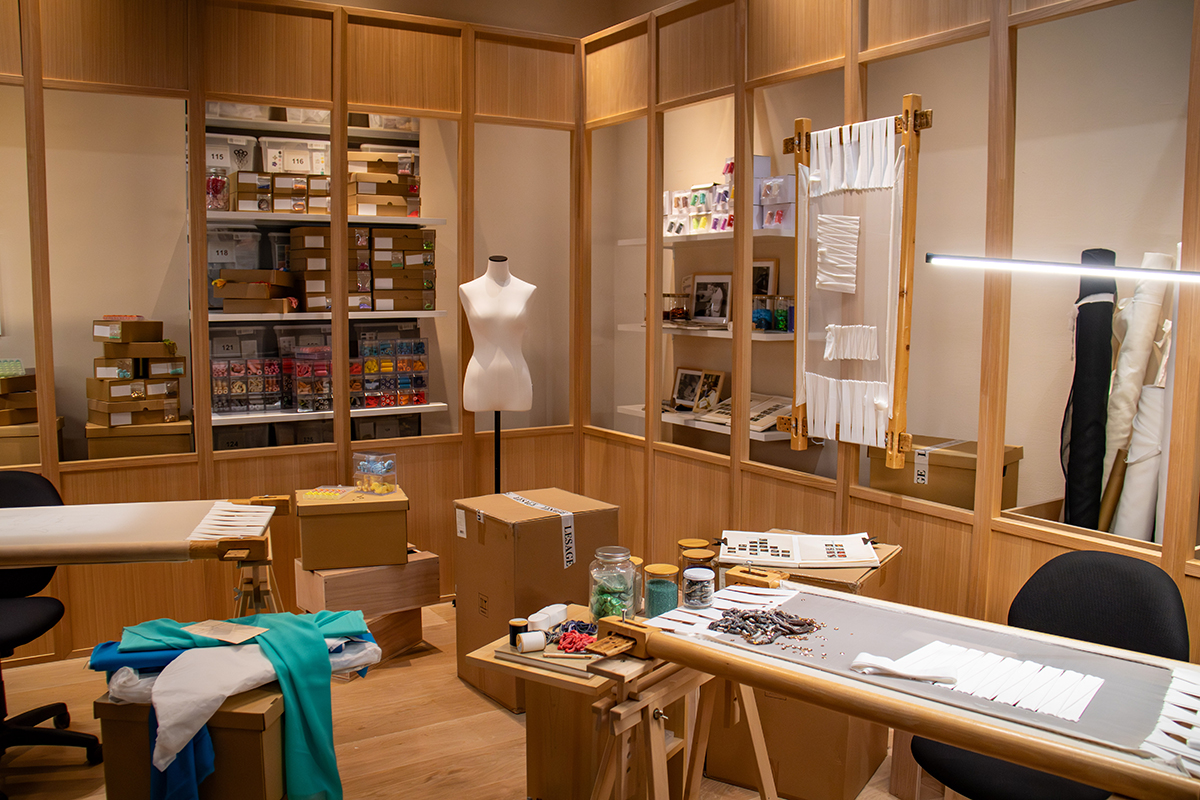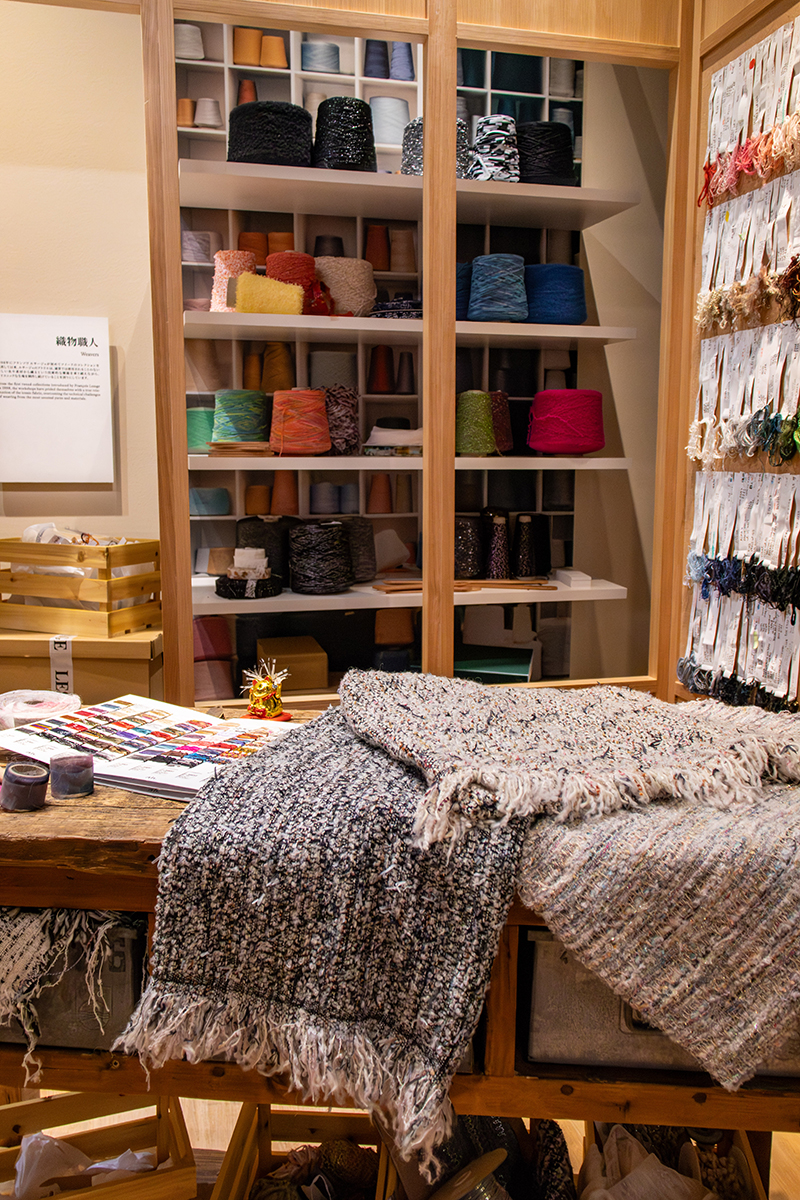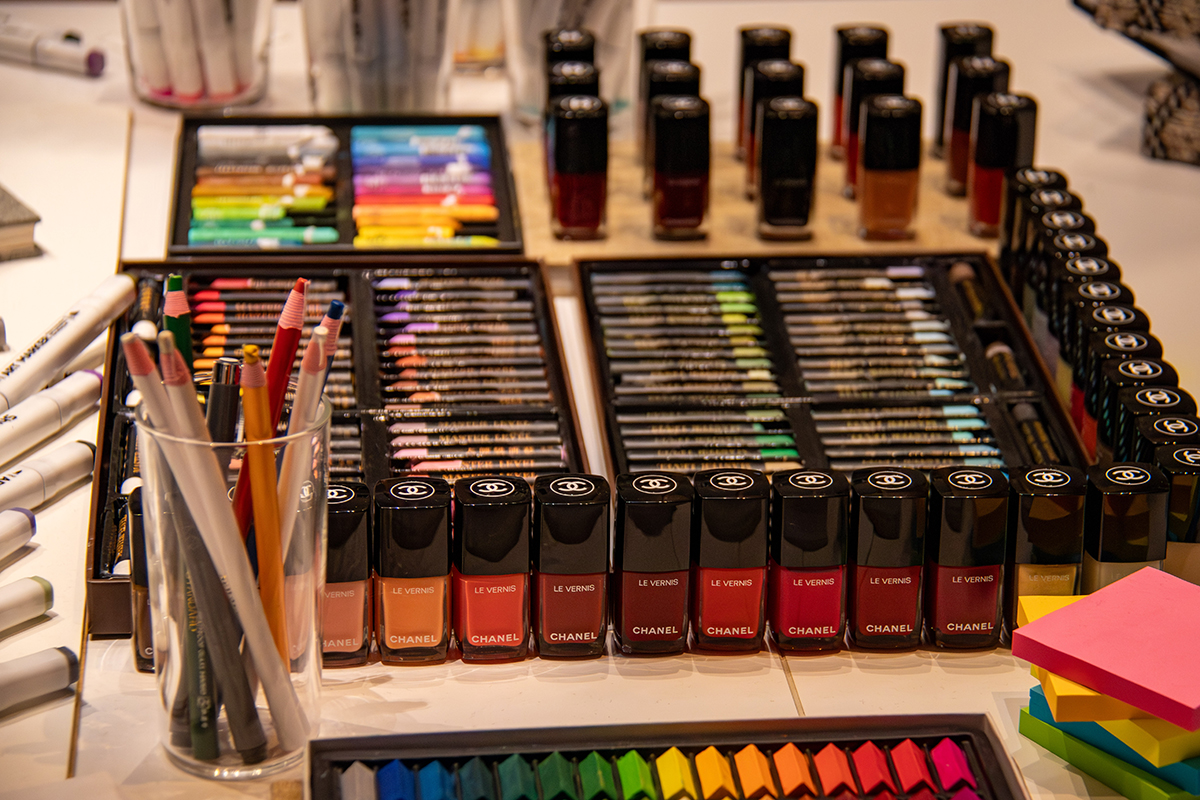CHANEL PRESENTS “LA GALERIE DU 19M TOKYO”
The second chapter of la Galerie du 19M Tokyo turns its gaze toward a century of excellence with “Lesage. 100 Years of Fashion and Decoration”, an exhibition that traces one of the most remarkable stories in modern craftsmanship. Founded in 1924 and now part of le19M, the House of Lesage has spent over a hundred years pushing the boundaries of embroidery and weaving, shaping the visual and material language of haute couture.

Overview of the Lesage workshop
From its earliest days, Lesage became synonymous with innovation, precision, and imagination. The atelier’s artistry has graced the creations of fashion’s most visionary designers, while remaining deeply rooted in the dialogue between heritage and experimentation. Passed down through three generations of master artisans, the Lesage legacy is not only a chronicle of technical mastery but a living testament to the power of reinvention.

Materials used at Lesage
The connection between Lesage and CHANEL is one of creative symbiosis, an enduring dialogue between two houses that share an unwavering belief in the artistry of the hand. A century after Gabrielle Chanel first presented her haute couture collection, her understanding of craft remains at the heart of CHANEL’s identity. She recognized that innovation in fashion was inseparable from collaboration with the finest artisans, embroiderers, pleaters, milliners, and weavers, whose work transformed fabric into poetry. This Parisian ecosystem, shaped over centuries, created a culture where craft and couture were inseparable. Within this context, Lesage emerged as one of its brightest stars, a workshop where thread, color, and bead became instruments of storytelling.

Materials used at Lesage, with CHANEL varnishes
This part of the exhibition offers visitors a rare glimpse inside the Lesage workshops, where embroidery and weaving converge in a symphony of precision and artistry. Each displayed tool and sample bears the imprint of countless hours of labor, frames stretched with silk, bobbins wound with metallic thread, needles poised for transformation. Here, craft is both intimate and collective, a choreography of gestures passed from one generation to the next.
In a striking collaboration, visual artist Romain Cieutat reimagines Lesage’s archives through contemporary technology. Using 3D imaging, he dissects five emblematic embroidery samples, revealing the invisible architecture behind their beauty, the layering of threads, sequins, and textures that together create an illusion of effortless grace. Cieutat’s work exposes what is often hidden, the extraordinary technical and aesthetic complexity of embroidery as an art form. Embroidery, at its essence, is the act of adding life to a surface, thread as light, fabric as landscape. In this section, Lesage’s diverse creative vocabulary unfolds through decades of collaboration with the world’s most influential designers. Each couturier, whether it be CHANEL, Christian Dior, Yves Saint Laurent, or Balenciaga, has drawn upon the Maison’s ability to translate abstract vision into tangible beauty.
When Karl Lagerfeld assumed creative direction of CHANEL in 1983, he brought with him a daring vision, one that revitalized the traditions of haute couture for a contemporary era. In François Lesage, he found a kindred spirit. Together, they redefined the dialogue between tradition and innovation, transforming needlework into a space of modern expression. Their collaborations gave rise to some of the most memorable textures in CHANEL’s history, with monochromes reimagined as luminous surfaces, baroque motifs made startlingly new. Their partnership captured the essence of CHANEL, timeless yet always in motion.
Read more ...




